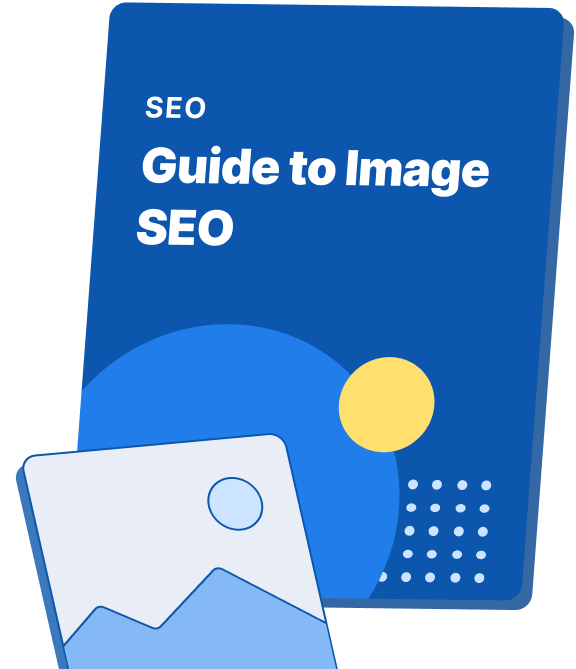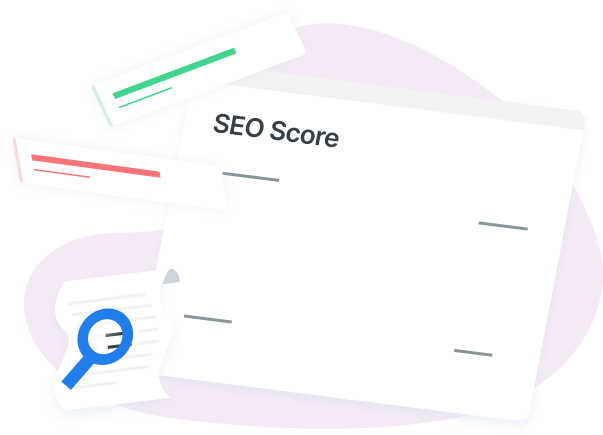-
 Published: Sep 22, 2023
Published: Sep 22, 2023
-
 9 min. read
9 min. read
-
 WebFX Team
WebFX Team Digital Marketing Agency
Digital Marketing Agency
- The WebFX team is made up of more than 450 subject matter experts in digital marketing, SEO, web design and web development, social media, and more. Together, they’ve helped WebFX’s clients earn more than $3 billion in revenue from the web — and that’s just in the past five years. @webfx
But did you know you’re missing out on an opportunity if you aren’t optimizing your images for SEO?
With SEO for images, you can help search engines understand your site and content more. Plus, you can get more exposure in image search results, which is invaluable for generating interest in your products and services.
Keep reading if you want to learn why SEO image optimization matters and how to optimize images for SEO. For professional help with optimizing images for SEO, contact us online or give us a call at 888-601-5359 to find out how WebFX can help!
Partner with a team of ecommerce masters!
WebFX campaigns have delivered more than 14,936,451 ecommerce transactions in the last 5 years
Read the Case Studies

Why is SEO for images important?
The process search engines use to analyze and rank web content is a complex process. Good SEO ensures your audience can quickly find you online. It is also one of the best ways to earn a top spot in search engine results pages (SERPs).
If you’re like many business owners, you may think that SEO only applies title tags, headers, and body content.
While these are some of the most critical places to do SEO, they aren’t the only ones. Search engines cannot process images the same way people can, and image SEO is the only way to make sure that they can understand.
Although the process of SEO image optimization takes a little know-how, it’s fairly straightforward to get your images ready for search engines.
Image SEO is another step toward improving your position in search engine results, and as a result, attracting more visitors to your site.


Images make up 62.6% of all searches
Learn how to optimize and leverage your website images for organic search!
Get My Free Guide10 tips for SEO image optimization
Learn how to optimize images for SEO with these ten tips for SEO image optimization:
1. Know your keywords and keyword phrases
Be sure to do your research, just as you would to optimize the rest of your website. You likely know the key search terms people use to find you online. If you’re familiar with the keywords for which you rank, excellent. You already know which keywords to include when you do SEO for your images.
If you’re unsure of your keywords, it’s time to do some research. Use Google’s Keyword Planner or another keyword research tool to discover what people are searching for that relates to your business. After you’re armed with the best keywords, you’re ready to begin the task of appropriately using SEO for images.
2. Follow best practices for naming images for SEO
We understand that it’s tempting to take the easy way out and label images with the standard title your camera gives them, or something simple like “image2.jpg.” But because search crawlers actually analyze image filenames, this is not ideal. This means your image filenames should accurately describe their content.
If a certain keyword is relevant to the image, include it in the file name. That being said, don’t just use random keywords with the hope of improving your rankings for image SEO. Even though a search engine might not be able to identify that the description is irrelevant right away, keyword stuffing is never a good idea.
3. Include images in sitemaps
Because search engines cannot get information from visuals, you need to put as many clues as possible about what exactly they contain. Google recommends creating image sitemaps as a best practice for publishing images.
This means you should follow its instructions for publishing images online. If you don’t, your images aren’t going to do as well as they could in the search engines.
4. Optimize image alt tags
Search engines can’t process images like the human brain. Instead, they rely on alt tags to determine what is being depicted. All of the images on your site should have unique alt tags describing them, and many should include relevant keywords.
They also help users who can’t see your images understand your pages better.
With this in mind, you should add alt tags to every image on your website as a part of your SEO image optimization. It can be somewhat tedious if you have lot of images and didn’t create alt tags when you originally uploaded them, but the SEO value is worth the effort.
Hopefully, all browsers are able to display your images.
If everything is working properly, an alt tag is what’s displayed when users hover their mouse over an image. But if for some reason a browser can’t display your image, an alt tag is the text that displays in its place.
When writing alt tags, aim to accurately describe your images in a few words as possible. And if the image is relevant to the keywords for the page it is on, be sure to include those as well.
That being said, you should never use alt tags as a way to “keyword stuff” your pages. Search engines like Google with eventually catch on, which will only hurt your SEO in the long run.
5. Incorporate title tags
In addition to alt tags, you should also include title tags as a part of optimizing your images for SEO. Many site owners get confused between these two elements, but unlike alt tags, title tags will not take the place of images that can’t be displayed. Instead, they pop up when users move their mouse over an image.
Because of this, your title tags don’t necessarily need to be keyword-heavy. In fact, you can even use them to speak directly to users. Write them like photo captions, or use them to include further explanations.
6. Write body content
While alt tags are certainly important, they provide a fairly limited amount of information to search engines. Because of this, you should write body content on your pages to provide them with context.
If you’re thinking, “But I run a photography website—I’m not a writer!”, you’re not alone. Many image-heavy site owners don’t like the idea of spending time writing copy when that isn’t their strong point. However, many photographers (and other professionals) solve this by adding blogs to their sites.
For example, let’s say you just photographed a wedding. Instead of simply uploading all of the photos to your site, incorporate them into a detailed blog post about the day. This will give you the chance to use your keywords naturally, and will also add an interesting, personal dimension to your site.
The most important thing to keep in mind is that your images and text are closely related. If your site is made up of interior design photos, but you write a bunch of copy about, say, your water skiing hobby, you’re only going to confuse search engines — and waste your time.
7. Don’t hide your text with images
Hiding any text is considered a black-hat SEO tactic, and it will come with penalties. You may want to use an image in place of the first page heading, also known as your H1, but don’t do this by covering up your header text. The thinking is innocent, but it should be avoided.
If you really want to use an image instead of text as your header, be sure to label the image appropriately to reap the SEO benefits of optimized images.
8. Consider different image formats
You might think file types are interchangeable when it comes to images. Who cares if a picture is a JPEG, PNG, or GIF? Actually, visitors will. If you have a ton of images, some of them will need to be compressed to ensure site speed. That sometimes means switching to a smaller file type.
In most cases, JPEG files take up the least space without compromising quality. If you can’t convert images to JPEG, PNG is another relatively small alternative for image SEO.
9. Compress images
Search engine rankings are based on many factors, including page load time. The larger the image files on a page are, the longer it will take to load. If your pages take a long time, your rankings may suffer from that alone. And if they take so long that users get frustrated and leave before they even see your content, your rankings could suffer even more.
Images add aesthetic appeal to your website, but use decorative images wisely. Too many of them, or decorative elements that are too large, can slow your load time. This can lead to fewer conversions or come with a hit to your page ranking.
Keep file sizes smaller to ensure shorter load times on each page. There’s no hard rule for file size, although anything larger than a few hundred kilobytes is probably going to hurt site speed.
Aim to keep images as clear as possible to maintain the quality. Don’t decrease the file size so much that the quality suffers, and don’t change the file type to something that’s going to cause a drastic difference in appearance.
JPGs are generally a safe option because they offer the highest quality at the smallest file size, but other file types work as well. Test out your options and see which type delivers the quality you want with the lowest size and load time.
10. Share your photos
As with pages full of written content, the rankings of image-heavy reach are impacted by links. The more links your site has from high authority sites, the better your chances of ranking well. Because of this, it’s in your best interest to have as many people see (and if possible link to) your content as possible.
This is where having lots of original visual content works in your favor. Images are much more attractive to viewers than long chunks of text, meaning that they are very shareable. Share your images on social media, include links in newsletters and other email correspondence, and encourage your followers and friends to do the same. You can also encourage site visitors to share your content by adding social sharing buttons on your website and blog.
260%
increase in organic revenue
198%
increase in organic transactions
150%
increase in organic traffic
3872%
increase in sessions from SEO
Start optimizing your images for SEO
As you optimize your content for the Internet, we hope you’ll also consider SEO for images. It’s a little time-consuming, but the SEO benefits are worth the effort as you extend your reach and strengthen your reputation online.
If you still aren’t sure how to do SEO for your images, or for any other aspect of your site, we’re happy to help! Contact us today to start attracting more traffic and leads, or check out our complete guide to this area of SEO.
-
 The WebFX team is made up of more than 450 subject matter experts in digital marketing, SEO, web design and web development, social media, and more. Together, they’ve helped WebFX’s clients earn more than $3 billion in revenue from the web — and that’s just in the past five years.@webfx
The WebFX team is made up of more than 450 subject matter experts in digital marketing, SEO, web design and web development, social media, and more. Together, they’ve helped WebFX’s clients earn more than $3 billion in revenue from the web — and that’s just in the past five years.@webfx -

WebFX is a full-service marketing agency with 1,100+ client reviews and a 4.9-star rating on Clutch! Find out how our expert team and revenue-accelerating tech can drive results for you! Learn more
Try our free SEO Checker
Boost your site’s search performance with our free SEO Checker. Analyze your website for optimization tips on titles, headers, content, speed, and more. Get a free report now to enhance rankings on Google, Bing, Yahoo, and beyond!

Table of Contents
- Why is SEO for Images Important?
- 10 Tips for SEO Image Optimization
- 1. Know Your Keywords and Keyword Phrases
- 2. Follow Best Practices for Naming Images for SEO
- 3. Include Images in Sitemaps
- 4. Optimize Image Alt Tags
- 5. Incorporate Title Tags
- 6. Write Body Content
- 7. Don’t Hide Your Text with Images
- 8. Consider Different Image Formats
- 9. Compress Images
- 10. Share Your Photos
- Start Optimizing Your Images for SEO


How Is Your Website’s SEO?
Use our free tool to get your score calculated in under 60 seconds.
Try our free SEO Checker
Boost your site’s search performance with our free SEO Checker. Analyze your website for optimization tips on titles, headers, content, speed, and more. Get a free report now to enhance rankings on Google, Bing, Yahoo, and beyond!






